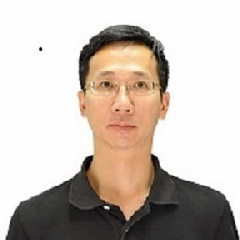Damping in Structures and Mechanisms
A special issue of Machines (ISSN 2075-1702). This special issue belongs to the section "Material Processing Technology".
Deadline for manuscript submissions: closed (28 February 2022) | Viewed by 3445
Special Issue Editors
Interests: ultrasound metamaterials; metamaterials for structural health monitoring applications
Special Issues, Collections and Topics in MDPI journals
Interests: structural health monitoring; smart structural control; bridge engineering; Artificial Intelligence; bio-inspired concept; information theory
Special Issues, Collections and Topics in MDPI journals
Special Issue Information
Dear Colleagues,
Modern mechanisms are increasingly made of lightweight (often composite) materials due to the well-known social need for energy savings. Despite their superior structural characteristics, lightweight structures may compromise comfort and exhibit fatigue to loading faster. Structural integrity can therefore be compromised. In order to maintain the comfort and safety levels within acceptable limits, additional damping at minimum extra weight needs to be implemented. This Special Issue will bring together academic and industrial researchers leading the field of mass-efficient, high-damping materials, mechanisms, and structures. The Issue will comprise high-quality manuscripts presenting a comprehensive range of cutting-edge technologies for damping enhancement strategies.
Prof. Dr. Dimitrios Chronopoulos
Prof. Dr. Tzu-Kang Lin
Guest Editor
Manuscript Submission Information
Manuscripts should be submitted online at www.mdpi.com by registering and logging in to this website. Once you are registered, click here to go to the submission form. Manuscripts can be submitted until the deadline. All submissions that pass pre-check are peer-reviewed. Accepted papers will be published continuously in the journal (as soon as accepted) and will be listed together on the special issue website. Research articles, review articles as well as short communications are invited. For planned papers, a title and short abstract (about 100 words) can be sent to the Editorial Office for announcement on this website.
Submitted manuscripts should not have been published previously, nor be under consideration for publication elsewhere (except conference proceedings papers). All manuscripts are thoroughly refereed through a single-blind peer-review process. A guide for authors and other relevant information for submission of manuscripts is available on the Instructions for Authors page. Machines is an international peer-reviewed open access monthly journal published by MDPI.
Please visit the Instructions for Authors page before submitting a manuscript. The Article Processing Charge (APC) for publication in this open access journal is 2400 CHF (Swiss Francs). Submitted papers should be well formatted and use good English. Authors may use MDPI's English editing service prior to publication or during author revisions.
Keywords
- damping materials
- smart and adaptable structures and mechanisms
- metamaterials and metastructures
- composite structures
- mass-efficient vibroacoustic attenuation






